Ground water
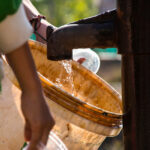
Cambodia relies heavily on its groundwater resources to overcome water shortages during the dry season. More than half of the population depends on it when enough surface water is not available. At a certain depth, the ground is saturated with water, and the upper surface ...
Land transfers
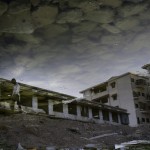
Land transfers in Cambodia assume a variety of forms involving both public and private entities. The right to transfer property to another and to be protected from forced transfer is essential to land tenure security. Land transfer capacity is a source of value for landowners, ...
United States aid
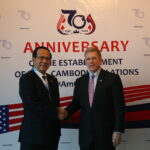
The United States of America (the US) is one of the biggest donors to Cambodia.39 40 The history of cooperation and relations between the two countries can be traced back to the early 1950s after Cambodia received full independence from France. In 1955, the first ...
State private land
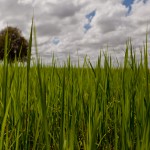
All land that is not state public property or is not privately owned is de facto state private land. State private land may be sold, exchanged, leased, granted as concessions, or otherwise alienated. ...
Artisanal mining
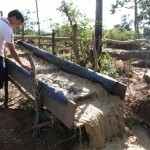
Artisanal mining is small-scale mining that typically involves individuals, family groups or small communities, often working with limited technology. The mining may be seasonal, fitted around other work such as farming. There is a large overlap between this type of activity and gemstone mining. Artisanal ...
On-shore oil and gas exploration and extraction
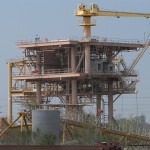
Nineteen onshore blocks have been delineated for possible oil exploration. Contracts have been awarded for three. No oil is currently extracted in Cambodia. ...
Relevant ministries
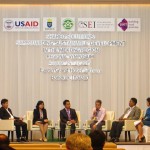
The Ministry of Environment is the main authority mandated to oversee environmental issues, including protected areas, environmental impact assessments, and management of natural resources. ...
Types of state-protected areas
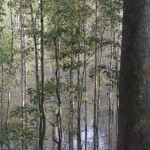
Flooded forest in Cambodia. Photo by Andrea Kirkby, taken 11 May 2014. Licensed under CC BY-NC 2.0.A 1993 royal decree designated 23 protected areas covering about 3,273,300 ha, equal to around 18% of the country’s total land area, and brought them under the jurisdiction of the Ministry ...
Disaster and emergency response funding
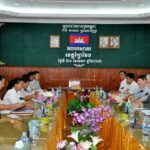
Cambodia has begun to integrate disaster and climate resilience goals into its national policies but implementation remains difficult. In the National Action Plan for Disaster Risk Reduction 2014–2018, the government prioritizes the target to: “build a resilient nation and local communities to pursue sustainable development.” ...
Forest protection NGOs
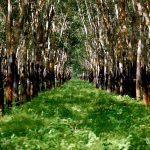
The protection of Cambodian forests is primarily the responsibility of the Ministry of Agriculture, Forests and Fisheries (MAFF) and the Ministry of Environment. There are, however, many non-governmental organizations (NGOs) working in the area, from United Nations (UN) agencies and other global bodies to locally-registered ...
Mitigation
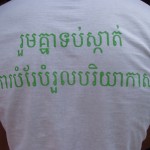
Together, fighting climate change. Photo by 350.org, taken on 12 October 2010. Licensed under CC BY-NC-SA 2.0.Clean Development MechanismThe Clean Development Mechanism (CDM), defined in Article 12 of the Kyoto Protocol, allows a country with an emission-reduction or emission-limitation commitment under the Kyoto Protocol to ...
Protected forest
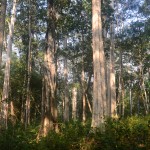
Protected Forests are generally established under individual sub-decrees, specifically for the purpose of protecting biodiversity and conservation. They are home to many endangered or threatened species. ...
Gemstone mining
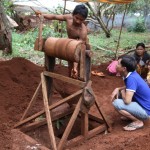
There is no large-scale industrial mining of gems in Cambodia, and few full-time miners. Most people involved in looking for gemstones fit it around other work – typically farm work – and mostly do it without licenses. As with artisanal mining, miners are often very ...
Special economic zones
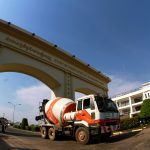
A Special Economic Zone (SEZ) is a defined area within a country that is subject to different laws and regulations than other areas of the country. These comprehensive industrial areas provide preferential incentives to investors and offer government import-export administrative support to facilitate trade. Though ...
Electricity production
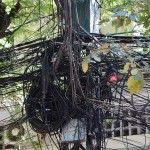
In Cambodia, electricity demands have been forecast to grow at 17.9 percent annually from 2012 to 2020.201 Distribution of electricity around the country has been a challenge: according to UN data, 79 percent of people live in rural areas,202 and the entire national population had grown ...
Energy policy and administration
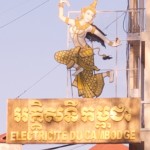
Electricite du Cambodge (EdC). Photo by bmeabroad, taken on 10 November 2011. Licensed under CC BY-NC-SA 2.0.Low electrification rates and over-dependence on fossil fuel imports have contributed to Cambodia ranking 120 out of 124 nations in the new World Economic Forum’s Global Energy Architecture Performance Index ...
State public land

State public land has a public interest value or provides a public service. The land is inalienable, although it can be leased for limited uses that do not alter or damage its public value. State public land should only be reclassified if the land no ...
Land tenure and land titling NGOs
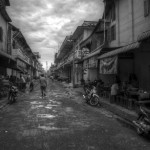
There are four major international donors to land rights development and reform in Cambodia: the World Bank, Germany, Finland and Canada. Their support spans multiple programs and several years with the overall objective of improving land tenure security and promoting stable land markets. ...
Land policy and administration
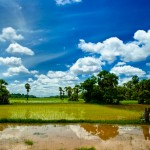
The Royal Government of Cambodia's land policy has three pillars: land administration, land management and land distribution. The objective of the country’s land policy is to facilitate the use and management of land and natural resources for socio-economic development in an equitable and sustainable manner. ...
Private non-profit development assistance
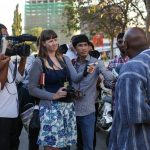
Maina Kiai speaking with journalists outside the Ministry of Foreign Affairs in Phnom Penh. Photo by Maina Kiai, taken on 6 February 2014. Licensed under CC BY 2.0The first humanitarian international non-governmental organizations arrived in 1989. After the 1993 election, more and more internal organizations ...



